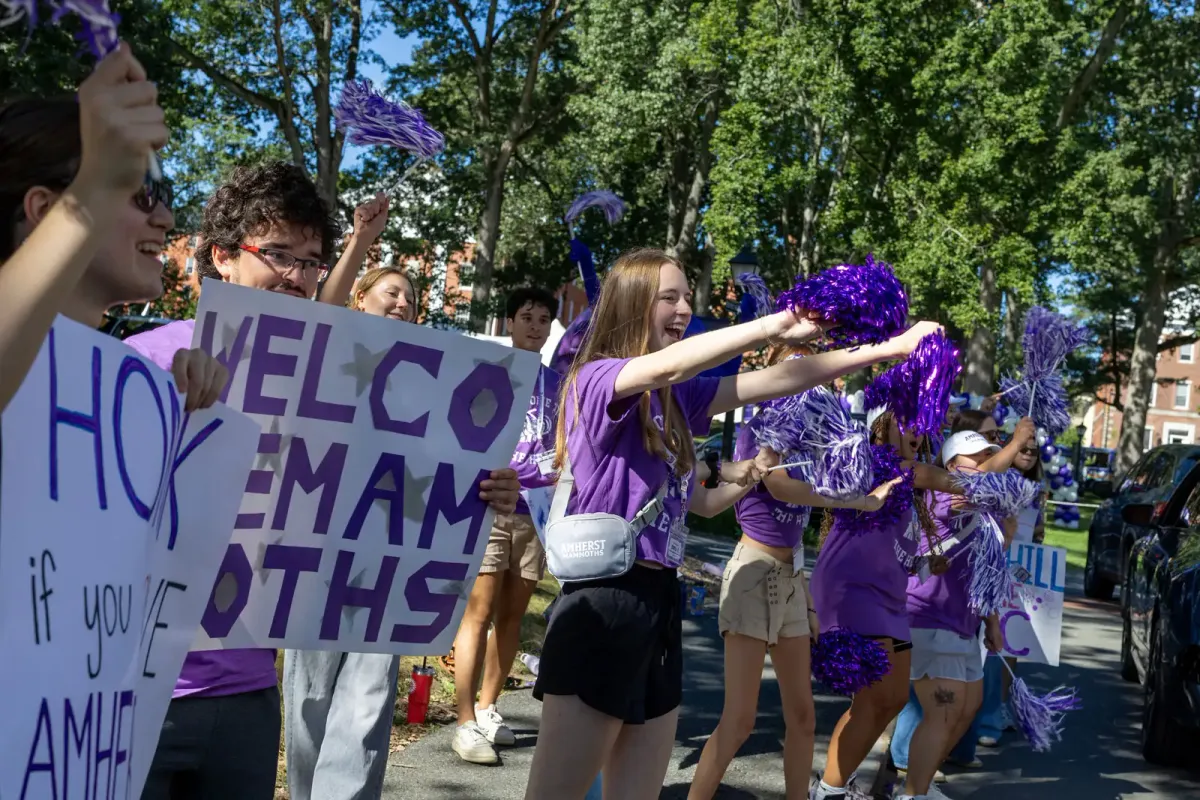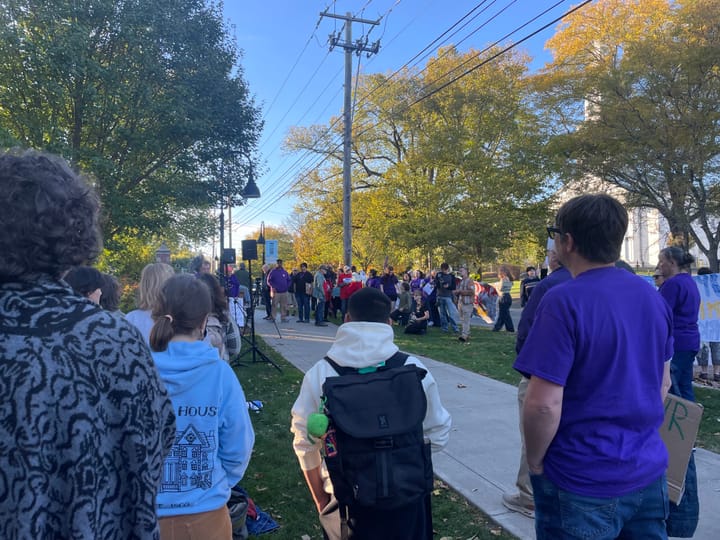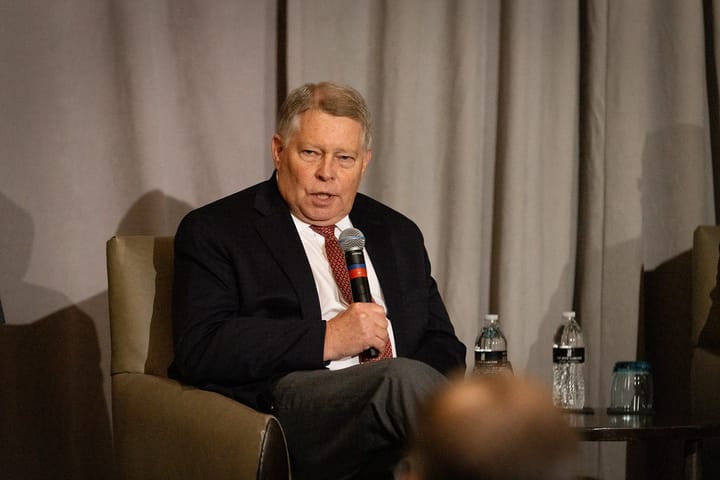College Releases First-Year Class Data After One-Month Delay
After a one-month delay, the college has released demographic data for the class of 2029. This year’s class sets a new record for the percentage of first-generation students and students from rural towns. The percentage of Black and African American and Latinx students also doubled.

The college released its admission and enrollment profile for the class of 2029 today. This is the second class to be admitted following the Supreme Court’s 2023 decisions in Students for Fair Admissions (SFFA) Inc. v. Harvard College and Students for Fair Admissions, Inc. v. University of North Carolina, banning the use of race-based affirmative action in admissions. This year’s profile doubled the percentage of Black and African American and Latinx students in the first-year class, saw a record number of first-generation students, and a record 11% of students from small or rural towns.
The full profile was released later than Matthew McGann, dean of admission and financial aid hoped it would be. In an interview with the Student, he said that changing federal data requests are responsible for the delay. The Department of Education is proposing to add a new survey, the Admissions and Consumer Transparency Supplement (ACTS), to the Integrated Postsecondary Education Data System (IPEDS) to collect more data, which the admissions center “wanted to better understand the survey a little bit before we put out a very formal set of data,” he said.
This year, according to federal reporting guidelines, 6% of the class of 2029 is Black or African American, and 16% is Latinx, a double percentage increase compared to the class of 2028’s respective 3% and 8%. Twelve percent of the class self identifies as Black or African American and 16% self identifies as Latinx.
The class of 2028 was the first class admitted after the SFFA decision, and had an 8% drop in Black students and a 4% drop in Latinx students compared to the class of 2027. The college was strongly against the overturning of affirmative action and initiated an amicus brief in August 2022. The brief was signed by over 30 liberal arts colleges and encouraged upholding holistic admissions processes that take race into account.
McGann explained that these drastic demographic shifts occurred because application trends are shifting “year-by-year.” “I’m very happy that this class is more socioeconomically diverse and more diverse in a variety of dimensions,” he said. McGann declined to comment on whether these Black and African American and Latinx numbers will continue to increase in upcoming admission cycles.
“What I can tell you is that we’re going to continue to try to live up to our values and our mission as best we can in this broader political environment,” McGann said. “There are lots of challenges, but we’re not going to back down from the challenges, and we’re going to keep at it.”
When asked if he was disappointed by the overall decline of Black and African American and Latinx students compared to classes admitted before SFFA, McGann said, “For me, it’s not about comparing against any previous year. It’s really about the community that we can build. I think the community is better when it’s more racially diverse.”
Twelve percent of the class identifies as Asian American according to federal reporting guidelines, an 8% decrease compared to the class of 2028. Twenty percent self identifies as Asian American. McGann did not know why these demographic shifts happened, but said “that we continue to try to do work in admission and financial aid to enroll a class with a diversity of perspectives and backgrounds, a process that is equitable, and we’re going to continue to do that.”
McGann stated that the college will continue to follow the law while still admitting diverse classes.
After two years of race-based affirmative action in admissions being banned, McGann said that there has been a decrease in students self-reporting their racial and ethnic identities. “I think the Common App, among other places, has documented that there has been an increase — system-wide — of students not choosing to answer that question. And I believe the trend has been the same here at Amherst,” he said.
The admissions committee does not have access to the racial and ethnic data of its applicants, so diversity within a class is achieved through a variety of strategies. The class of 2029 has a record number of first-generation students and QuestBridge matches — 21% and 7% respectively. McGann attributed this to the college returning to “its fundamentals,” which he said includes creating a community of students from a variety of backgrounds, understanding individual students’ challenges and opportunities, and not assuming that every student has had the same level of resources. Additionally, 61% of the class of 2029 received scholarship and grant aid, and 25% are Pell Grant recipients.
“When we focus on those fundamentals, I think good things can happen. I think that a lot of the success of this year is trying to double down on those things that have made Amherst so successful,” he said, adding that the college “sees more students on financial aid and more students receiving Pell Grants than a number of other schools.” (While Williams has not yet released its class of 2029 profile, 19% of their class of 2028 receives Pell Grants. Twenty percent of Bowdoin College’s class of 2029 and 15% of Tufts University’s class of 2029 receive Pell Grants.)
This past year, the admissions office added new positions, one of which focuses on rural and small-town outreach, as well as others that aim to increase access more broadly. Chris Muñoz-Calene is the associate dean of admission and coordinator of diversity and outreach. Eleven percent of the class of 2029 are students from small or rural towns. “For all of our success this year, when you can have more talented people as a part of the group, you can accomplish more, so that was a big help,” McGann said.
He also said that this admissions cycle included some of the highest levels of community participation from students and faculty the college has ever seen. “The community really stepped up this year. And any success that we had, I think, is certainly well beyond just the admission and financial aid offices,” McGann said. The college has also been working more closely with QuestBridge, community-based organization partners, and nonprofit community colleges access organization partners. McGann said that in a lot of ways, the college has “called on more people.”
McGann also attributes the 15,819 applicants to the college’s efforts and outreach. 1,222 students were admitted, resulting in an 8% acceptance rate for the class. He does not want to continue driving the admission rate lower, and explained that he wants the admission process to be “humane” and “aligned with our mission.” He added that “If we can enroll a great class, whether the applications went up or down doesn’t really matter to me.”
Ten percent of the class of 2029 are international students, a six-point percentage drop from the class of 2028. McGann does not attribute this statistic to the Trump administration’s hostility toward international students. However, McGann is concerned about how the current administration’s recent immigration policies will affect the class of 2030.
Forty-three percent of this year’s class was accepted under the early decision process. McGann said that he is glad that the college admits most of its students during regular decision, and is not part of the increasing number of schools where half of the class’s slots are taken during early decision. “I think we’ve been very intentional about trying to keep our early decision numbers relatively low,” he said. He clarified that the college does not want to hold a student’s decision on applying early or regular against them.
In August, Amherst, Mount Holyoke College, and Smith College — among 32 other higher education institutions — were named in a Massachusetts class action lawsuit that accuses early admissions policies of constituting an antitrust violation and exacerbating inequality in admissions.
“I’m really happy with [the] class of [20]29. I think it’s a great class, and we’re hard at work trying to get an equally, if not even better, class of 2030,” McGann said.
Zaynah Shariff ’27 contributed to the reporting of this article.
Correction, Oct. 22, 2025: A previous version of this article stated that according to federal guidelines, 8% of the class of 2029 is Latinx. The correct number is 16%. Self reported identities have also been added.




Comments ()